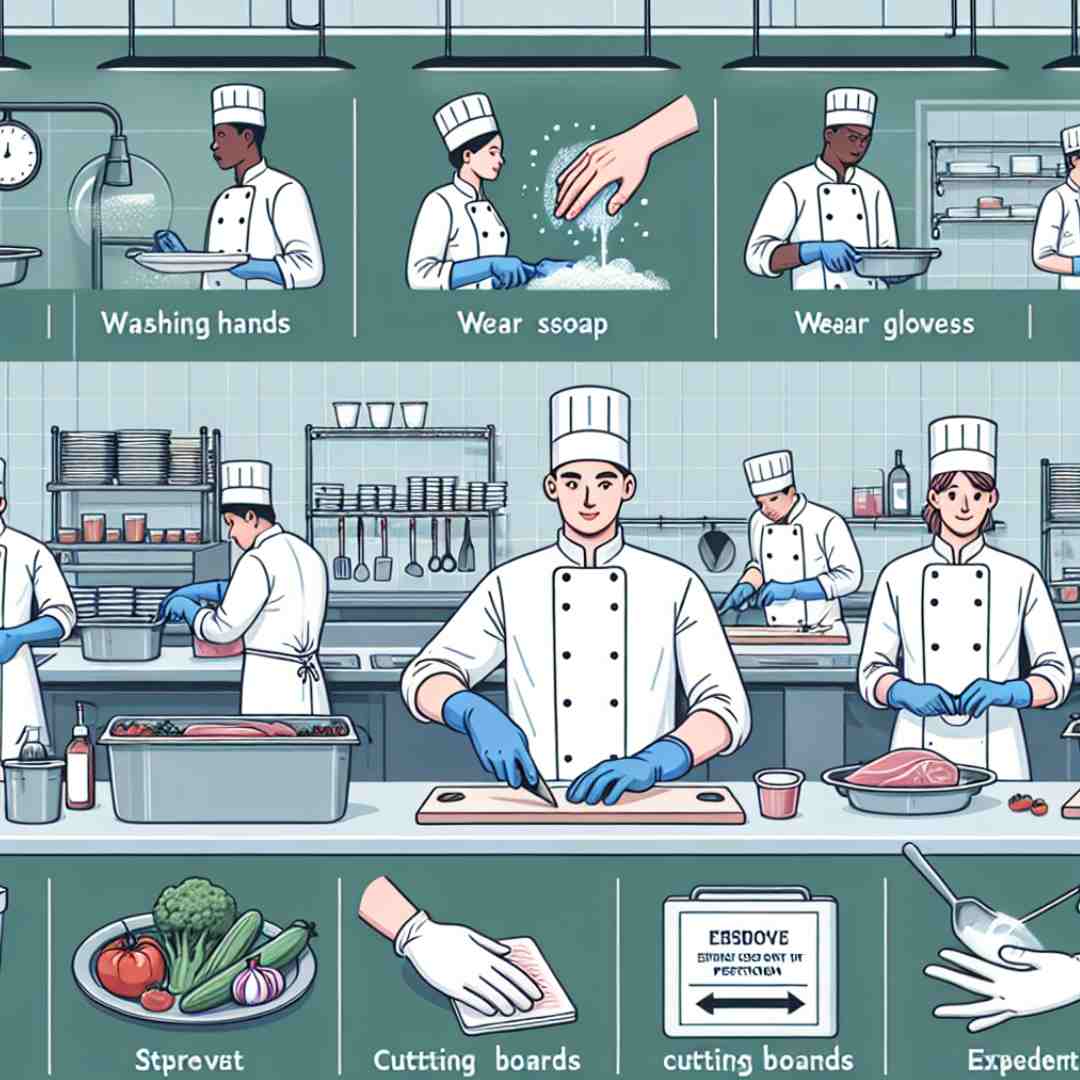In a world where food is a necessity and an experience, ensuring its safety is paramount. Whether running a bustling restaurant, crafting meals at home, or overseeing operations in the food industry, maintaining high food safety standards is crucial. This post dives into the best practices to prevent poor food safety, offering valuable insights and practical tips for keeping every bite safe and delicious.
Why Food Safety Matters
Food safety isn’t just about preventing illness; it’s about protecting your reputation and ensuring customer satisfaction. In restaurants, a single mistake can tarnish your brand. For home cooks, it’s about safeguarding loved ones. In the broader food industry, it’s about upholding standards that maintain public health.
The first step in understanding the importance of food safety is recognizing its impact. Every year, millions suffer from foodborne illnesses, leading to hospitalizations and, in severe cases, fatalities. These statistics highlight the critical nature of the issue and the need for stringent safety measures.
Understanding the consequences of neglecting food safety also involves financial implications. The costs associated with a foodborne outbreak can be devastating, including legal fees, fines, and loss of clientele. Thus, food safety is not just a health priority but an economic one.
The Basics of Food Safety
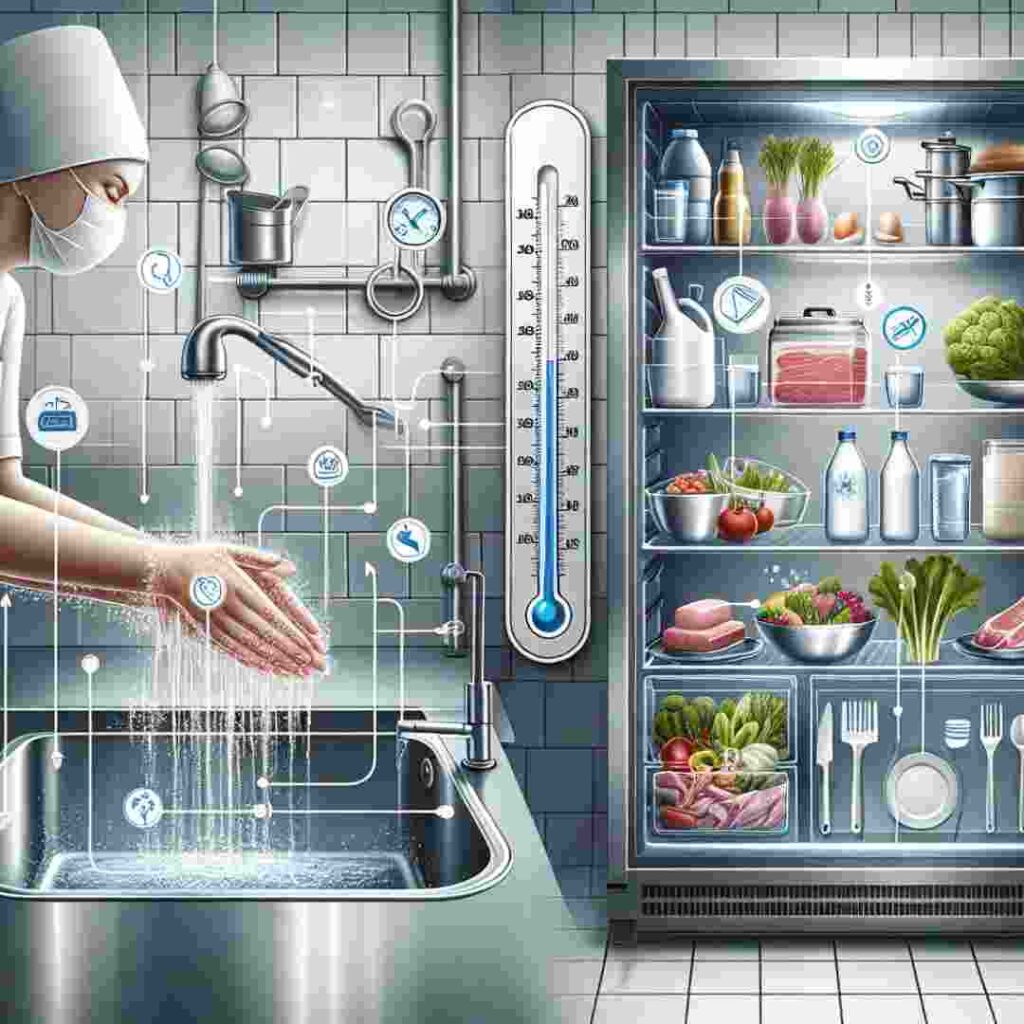
Gripping the basic principles of food safety is essential before implementing advanced strategies. These principles form the foundation upon which more complex procedures are built, and they apply to both seasoned professionals and aspiring chefs.
The first rule is maintaining cleanliness. This includes personal hygiene, such as washing hands thoroughly and frequently and ensuring that all cooking surfaces and utensils are sanitized before and after use. Cleanliness reduces the chances of cross-contamination, a significant culprit in foodborne illnesses.
Another core principle is understanding proper food storage. Temperature plays a significant role here, determining how quickly bacteria can grow on food. Keeping perishables at recommended temperatures helps inhibit microbial growth, preserving the food’s integrity and safety.
Implementing a Food Safety Plan
A structured food safety plan is essential for both businesses and individuals. This plan serves as a roadmap, guiding you through the necessary procedures to prevent contamination and ensure safe food handling practices.
Start by conducting a hazard analysis to identify potential risks in your food preparation process. This step helps pinpoint where issues might arise, whether in sourcing ingredients or maintaining equipment. By understanding these risks, you can develop strategies to mitigate them.
Once hazards are identified, establish critical control points. These are stages in the food preparation process where controls can be applied to prevent or reduce risks to acceptable levels. Implementing monitoring procedures at these points ensures that any deviations are detected and corrected promptly.
Training and Education
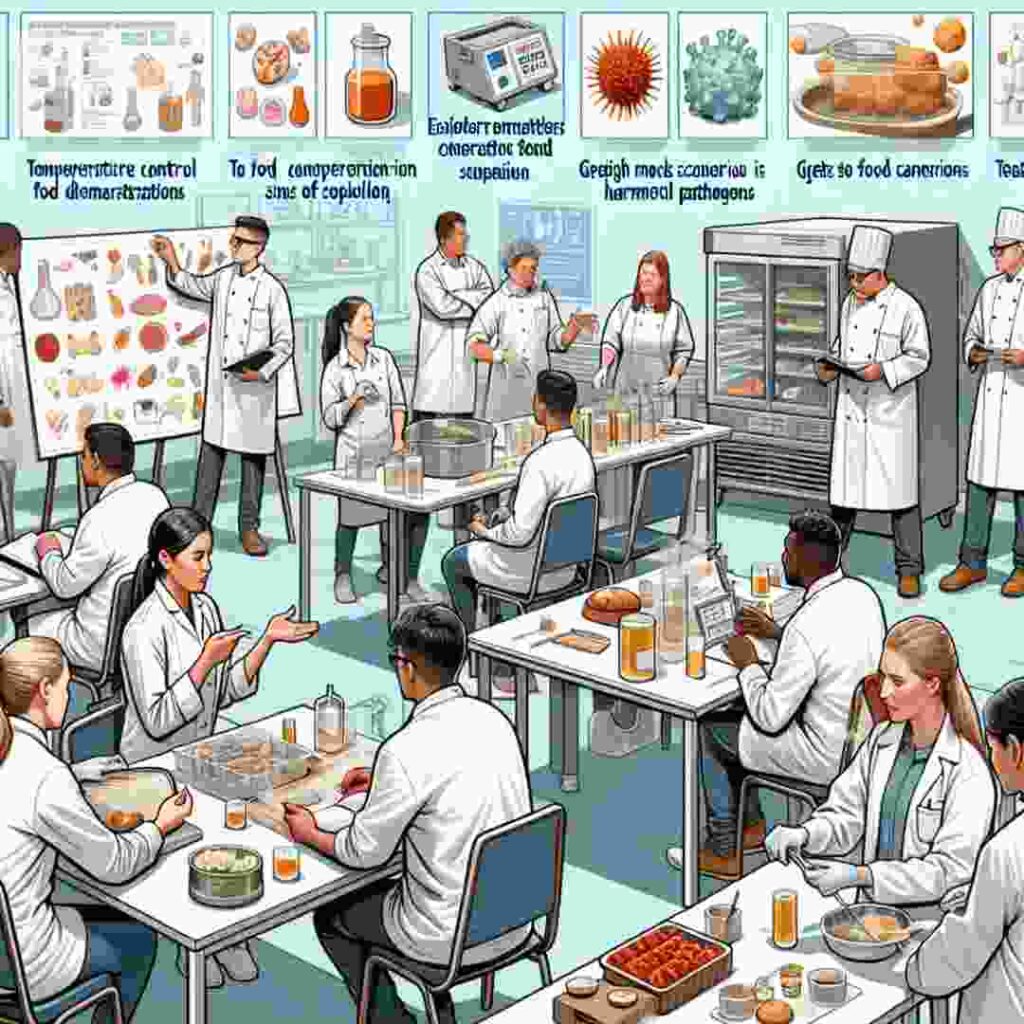
Educating staff and anyone involved in food preparation is critical to food safety. Knowledge empowers individuals to make informed decisions and adhere to safety protocols, significantly reducing the chance of error.
Training should start with basic food safety concepts and gradually progress to more advanced topics. This can include understanding the importance of temperature control, recognizing signs of spoilage, and learning about different pathogens that affect food.
Regular training sessions help reinforce these concepts, keeping safety practices fresh in everyone’s minds. Consider incorporating hands-on training, such as mock scenarios, to challenge and engage participants and ensure they are well-prepared for real-world situations.
The Role of Technology in Food Safety
Technology is pivotal in enhancing food safety practices in today’s digital age. Technology offers solutions that improve efficiency and accuracy, from monitoring systems to intelligent kitchen appliances.
One way technology assists is through automated temperature monitoring. These systems provide real-time data on the conditions of food storage areas, alerting you if temperatures deviate from safe ranges. This proactive approach minimizes the risk of spoilage and contamination.
Additionally, technology aids in record-keeping, an essential aspect of food safety plans. Digital logs allow for more accurate and accessible records, ensuring that data is always up-to-date and readily available for audits or inspections.
Understanding Cross-Contamination

Preventing cross-contamination is a fundamental aspect of food safety. It occurs when harmful bacteria or allergens are inadvertently transferred from one surface or food item to another, often due to improper handling.
One common cause of cross-contamination is using the same cutting board or knife for different types of food without proper cleaning in between. Designating specific tools for other food groups, such as raw meats and vegetables, can help eliminate this risk.
Another effective strategy is organizing your workspace to separate raw and cooked foods. This separation prevents juices from raw meat or fish from contacting ready-to-eat items, reducing the likelihood of contamination.
The Significance of Temperature Control
Temperature control is a critical factor in preventing foodborne illnesses. Bacteria multiply rapidly between 40°F and 140°F, known as the “danger zone.” Keeping food out of this range is essential to inhibit microbial growth.
Ensure that refrigerators and freezers are set to the correct temperatures, regularly checking them with thermometers. Use warming trays or chafers to maintain safe temperatures during service or catering events for hot foods.
Reaching the proper internal temperatures to kill harmful bacteria is crucial during cooking. Investing in a reliable food thermometer can help verify that meats and other temperature-sensitive foods are cooked thoroughly.
Addressing Allergen Management
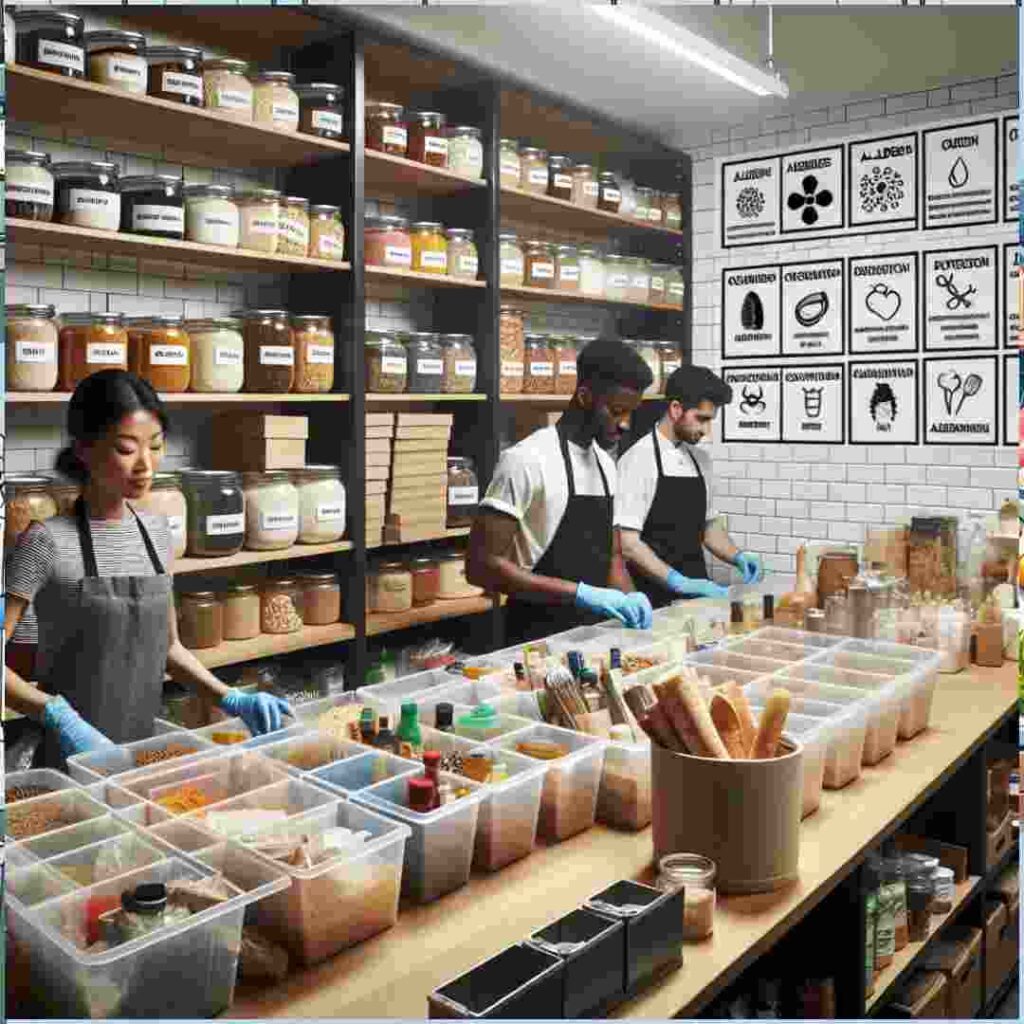
Allergen management is an often overlooked aspect of food safety that requires attention and diligence. As food allergies become increasingly common, understanding and preventing cross-contact is vital for protecting consumers.
Start by identifying allergens in your kitchen or pantry. This involves clearly labeling all ingredients and storing allergens separately from other foods to prevent accidental exposure.
Train staff to recognize and handle allergy-related incidents effectively. This includes understanding how to prevent cross-contact during food preparation and knowing the appropriate response to an allergic reaction.
The Benefits of Regular Audits
Regular food safety audits are an excellent way to maintain high standards and ensure compliance with regulations. These audits provide valuable insights into your current practices and highlight areas for improvement.
Audits should be thorough, covering all aspects of your operations, from receiving ingredients to serving dishes. An external auditor conducting these assessments can offer an unbiased perspective and expert recommendations.
Documenting audit results helps track progress over time, showcase improvements, and identify recurring issues. This information helps refine your food safety plan and demonstrate a commitment to excellence.
Building a Culture of Food Safety
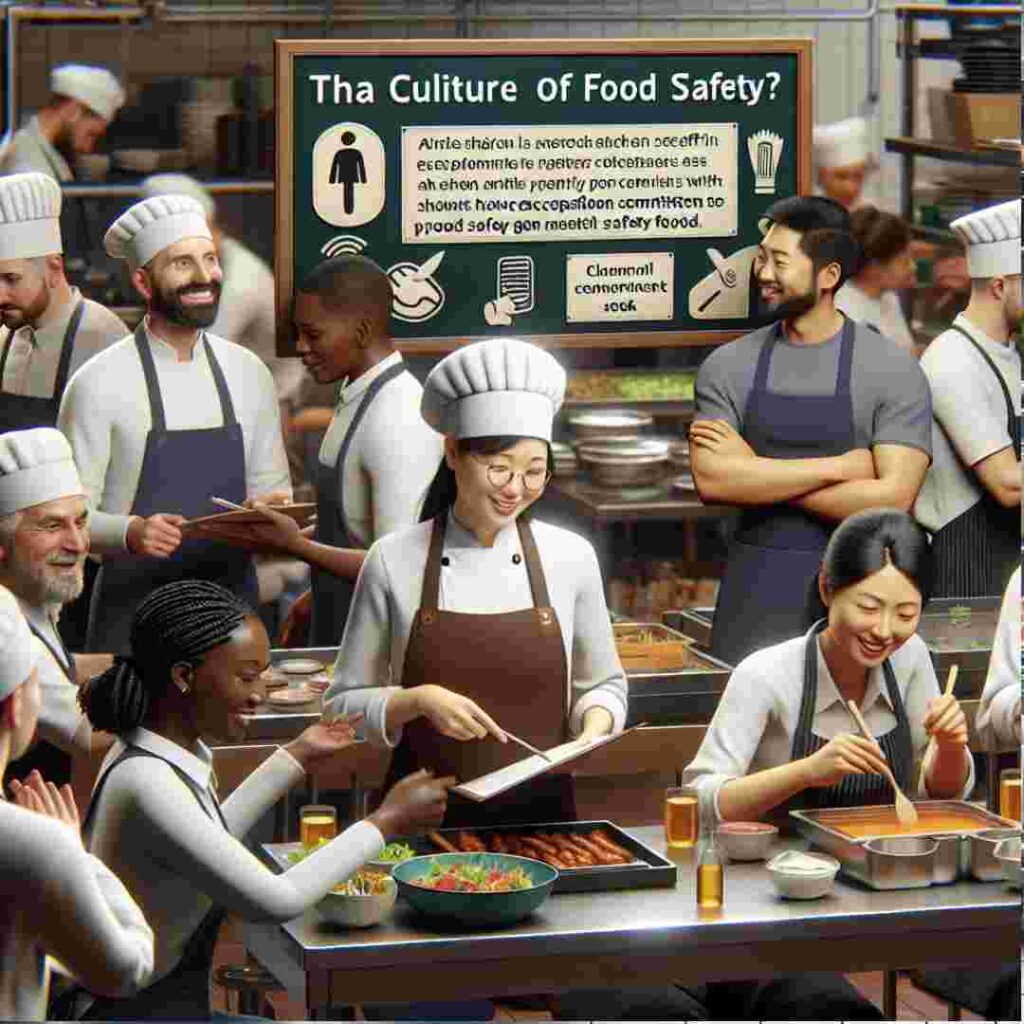
Creating a food safety culture within your organization or kitchen is critical to long-term success. This involves fostering an environment where everyone understands the importance of safety and actively participates in maintaining high standards.
Encourage open communication among staff, allowing them to voice concerns or suggestions about food safety. This collaborative approach ensures that everyone feels invested in the shared goal of providing safe and delicious food.
Recognize and reward individuals who demonstrate exceptional commitment to food safety practices. Positive reinforcement boosts morale and reinforces the significance of following protocols.
Staying Informed and Adapting to Changes
Food safety is an evolving field, with new information and technology continually emerging. Staying informed about these changes helps you adapt and refine your practices, ensuring you remain at the forefront of safety standards.
Subscribe to industry publications or newsletters to receive updates on the latest research, regulations, and trends. Attending workshops or webinars can also enhance your knowledge and provide networking opportunities with other professionals.
Review and update your food safety plan regularly to incorporate new insights or technologies. This proactive approach keeps your practices relevant and responsive to the dynamic nature of the food industry.
Bringing It All Together
Ensuring food safety is a multifaceted endeavor that requires diligence, education, and adaptability. Whether you’re running a restaurant, cooking at home, or managing operations in the food industry, these best practices provide a solid foundation for maintaining high safety standards.
You can protect your customers, loved ones, and business reputation by prioritizing cleanliness, understanding temperature control, preventing cross-contamination, and fostering a safety culture. Remember, food safety is a continuous process. Stay informed, stay vigilant, and strive for excellence in every bite.
For those seeking further guidance or resources, consider contacting food safety organizations or consulting industry experts. Together, we can create a safer and more delicious world for everyone.
-

Your Ultimate Guide to Swordfish: Everything You Need to Know
Swordfish is a popular choice at FultonFishMarket.com, and for good reason. Its meaty texture,…
-

Your Complete Guide to Snapper
Four Whole Red Snappers on Ice Snapper has been enjoyed in kitchens worldwide for…










